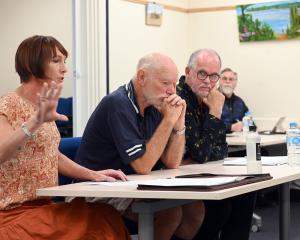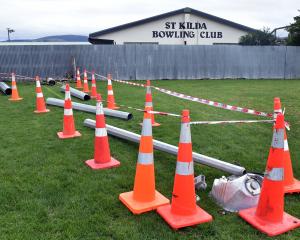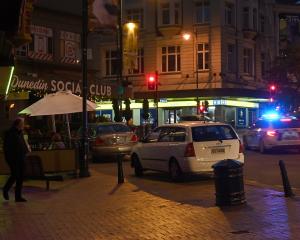The audit comes as a sheet of glass over a veranda outside the university's Information Services Building shattered on to the Cumberland St footpath.
University director of property services Barry MacKay said ''fortunately'' no pedestrians were hurt as a result.''
The cause is yet to be determined and the university is investigating how the glass broke. However, the rest of the glass over this veranda is being removed as a precaution and checked.''
Earlier this month Mr MacKay, responding to an Otago Daily Times official information request, said an audit of internal glazing had been launched to check safety across some of the institution's more than 200 buildings.
This could lead to the institution taking steps to better protect those inside up to a dozen of its own buildings.
The audit follows a glass ceiling panel shattering inside the Dunedin City Council-owned Wall Street mall in April, showering two men - one in a wheelchair - with glass fragments.
The pair escaped injury, but the incident prompted a warning any repeat had the potential to be fatal and led to the council spending $60,000 to retrofit a protective film under each glass panel inside the mall.
Mr MacKay said the university's checks would pay particular attention to horizontal and canopy panels, following problems with shattering glass ''over the past few years'', he said.''
This problem potentially affects around a dozen of the university's more than 200 buildings and the cost of resolving it is unknown at this stage,'' Mr MacKay said.
The university also released emails between staff revealing an incident similar to that inside the Wall Street mall had also occurred at Arana College on March 26.
An email from the college's property manager, Brian O'Kane, to a university staff member said two large sheets of glass - forming part of canopy outside the main dining hall - had ''spontaneously shattered and fell to the ground''.
There were no injuries, ''but there would have been if residents [or] staff were underneath'', he wrote.
University property services strategy and planning manager Sue Larkins, who received the email, wrote back: ''Yuck! Thank goodness no-one was injured!''
She later said about the use of toughened glass, ''a fundamental rethink may be in order''.
The incident inside the Wall Street mall occurred weeks later, and was eventually blamed on nickel sulphide inclusion in the glass.
The nickel inclusions sometimes inadvertently occurred during the manufacture of float glass that was later toughened, and could on average affect one in 25,000 sheets of glass.
Accidental nickel contamination, often from tiny amounts of stainless steel getting mixed into recycled glass cullet, meant nickel sulphide crystals formed during glass toughening. Tiny nickel sulphide crystals slowly reverted to a larger form, causing toughened panels to spontaneously shatter.
Parker Warburton Team Architects Ltd director Simon Parker - whose firm was the lead architect behind the Wall Street mall - said glazing codes were tightened in 2010, and other Dunedin buildings would need to be retrofitted if owners wanted to meet requirements.
Mr MacKay said the university used ''a large amount of glass'' inside its buildings, particularly for balustrades.
On the ''odd occasions'' panels had shattered in the past, the incidents had been managed by replacement, improvements to fixing systems and using protective films, Mr MacKay said.
However, the most recent change in glazing standards had prompted the university's audit, he said.
''Once the audit is complete we will make a risk-based assessment of the options for protecting the building occupants and users, including the use of protective film.
If it is decided to use protective film, a programme and cost will need to be established.''












